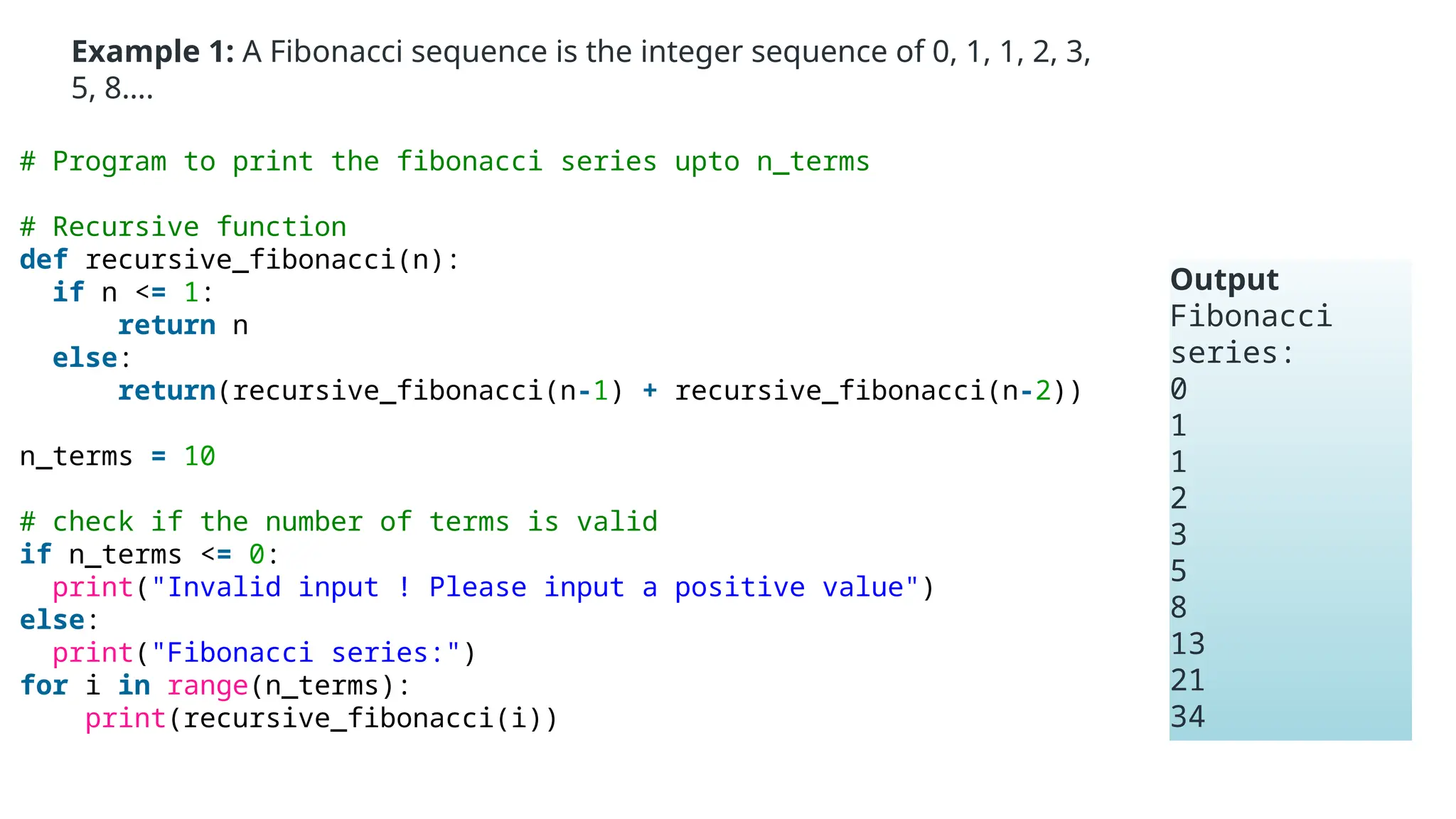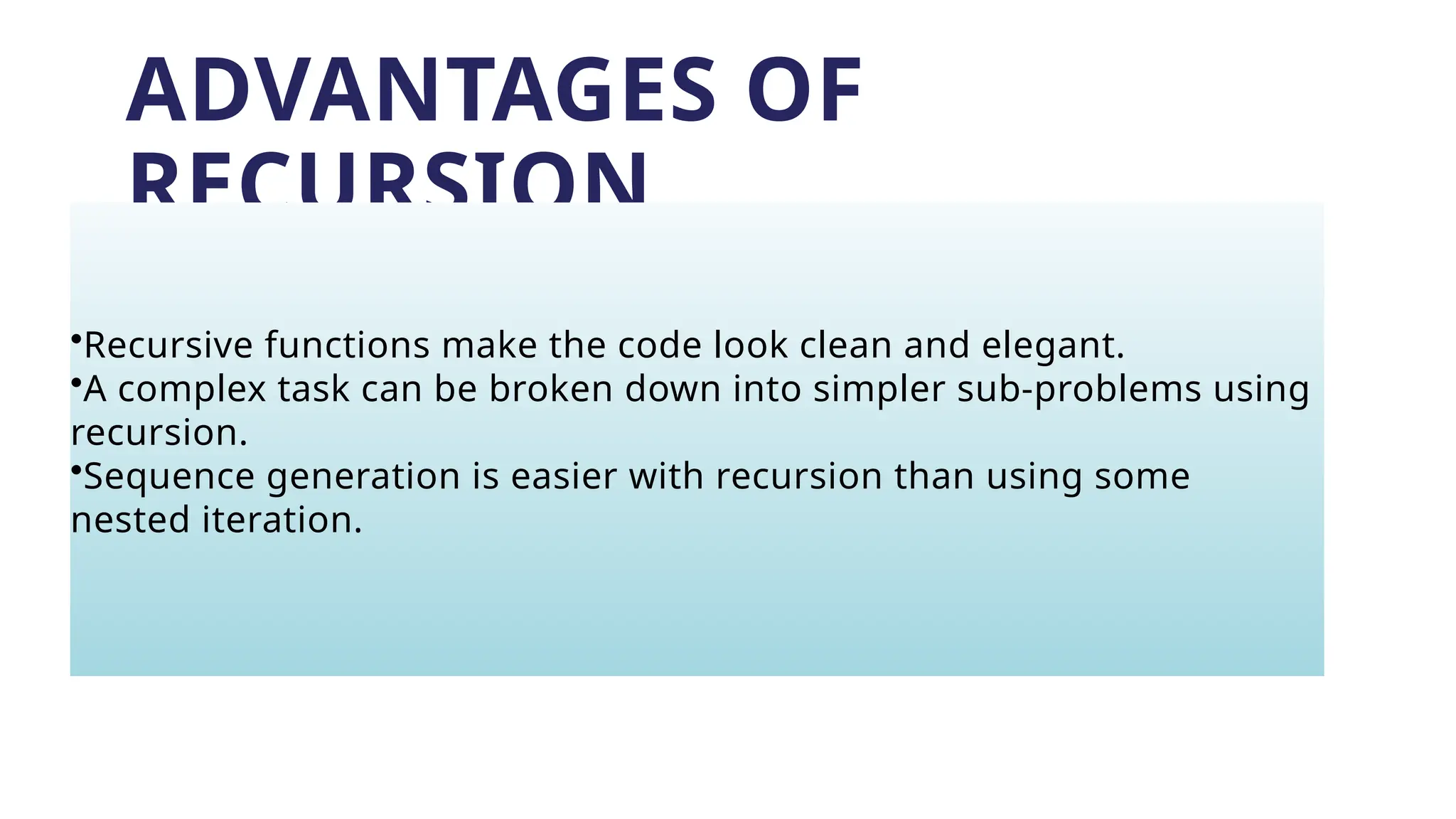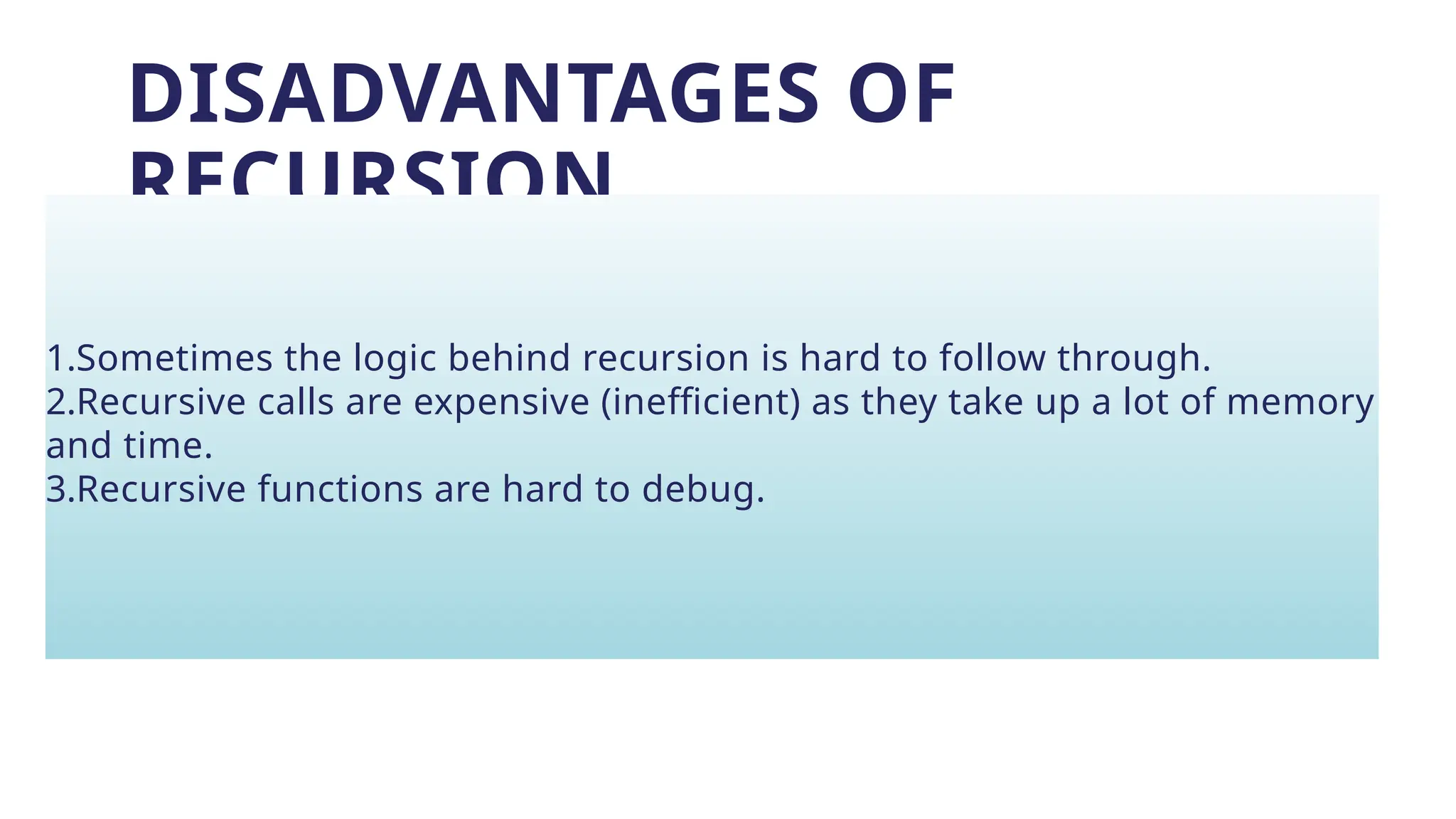The document explains recursion in Python, defining it as a process where a function can call itself. It provides examples of recursive functions, including calculating factorials and generating Fibonacci sequences, while discussing advantages like cleaner code and disadvantages such as inefficiency and complexity. Additionally, it highlights the importance of a base condition to prevent infinite recursions and mentions the Python interpreter's limit on recursion depth.
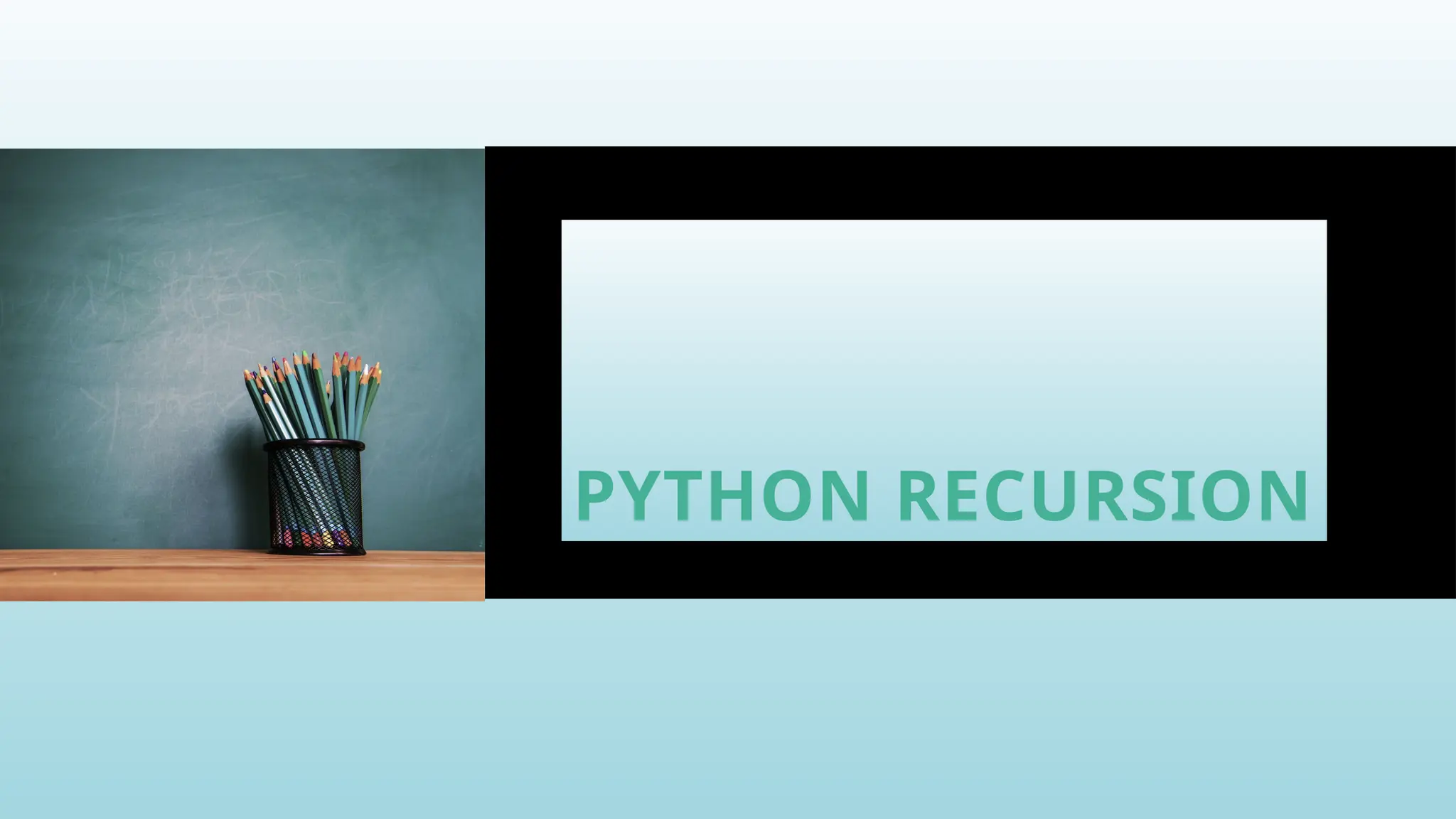
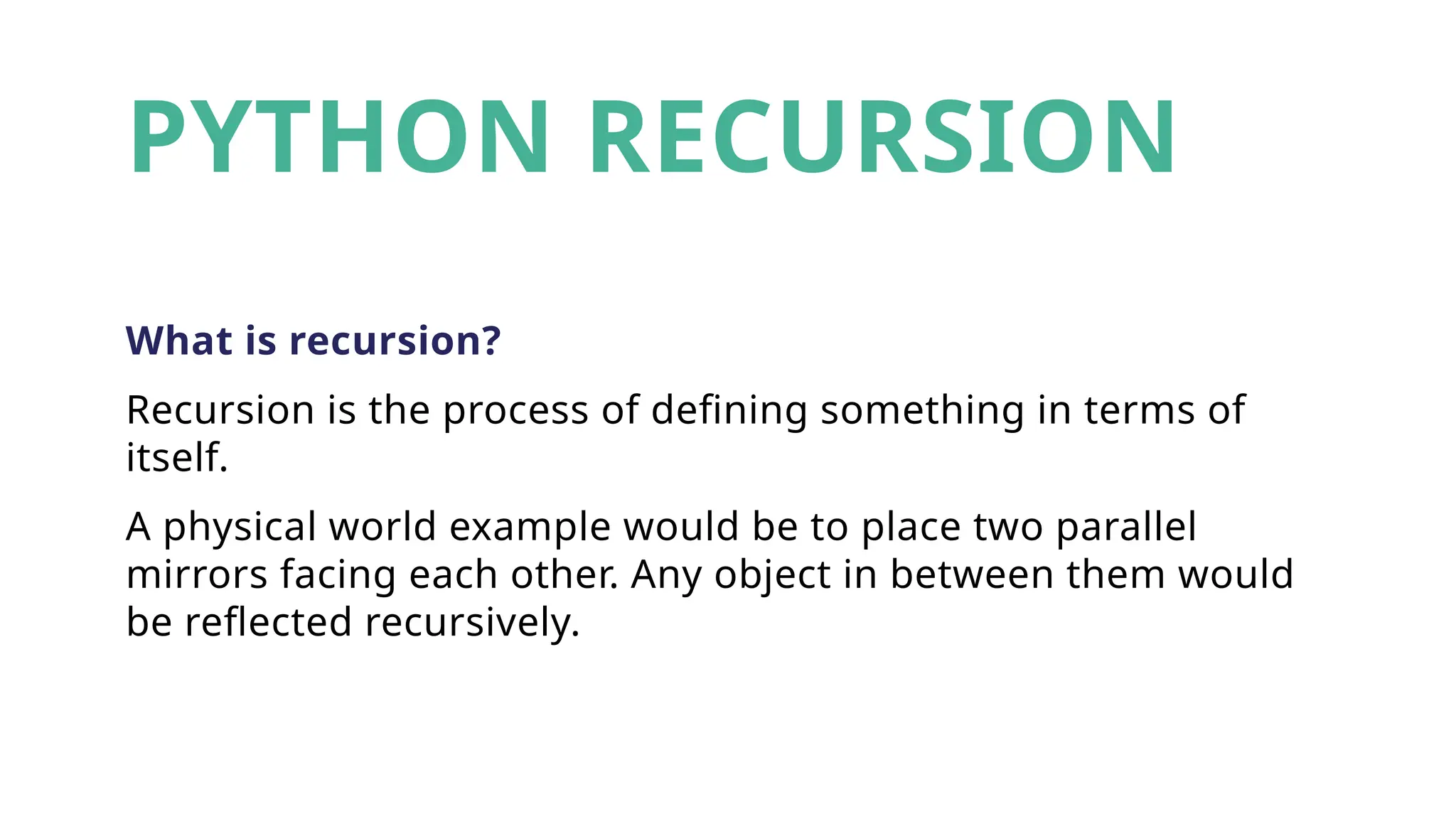
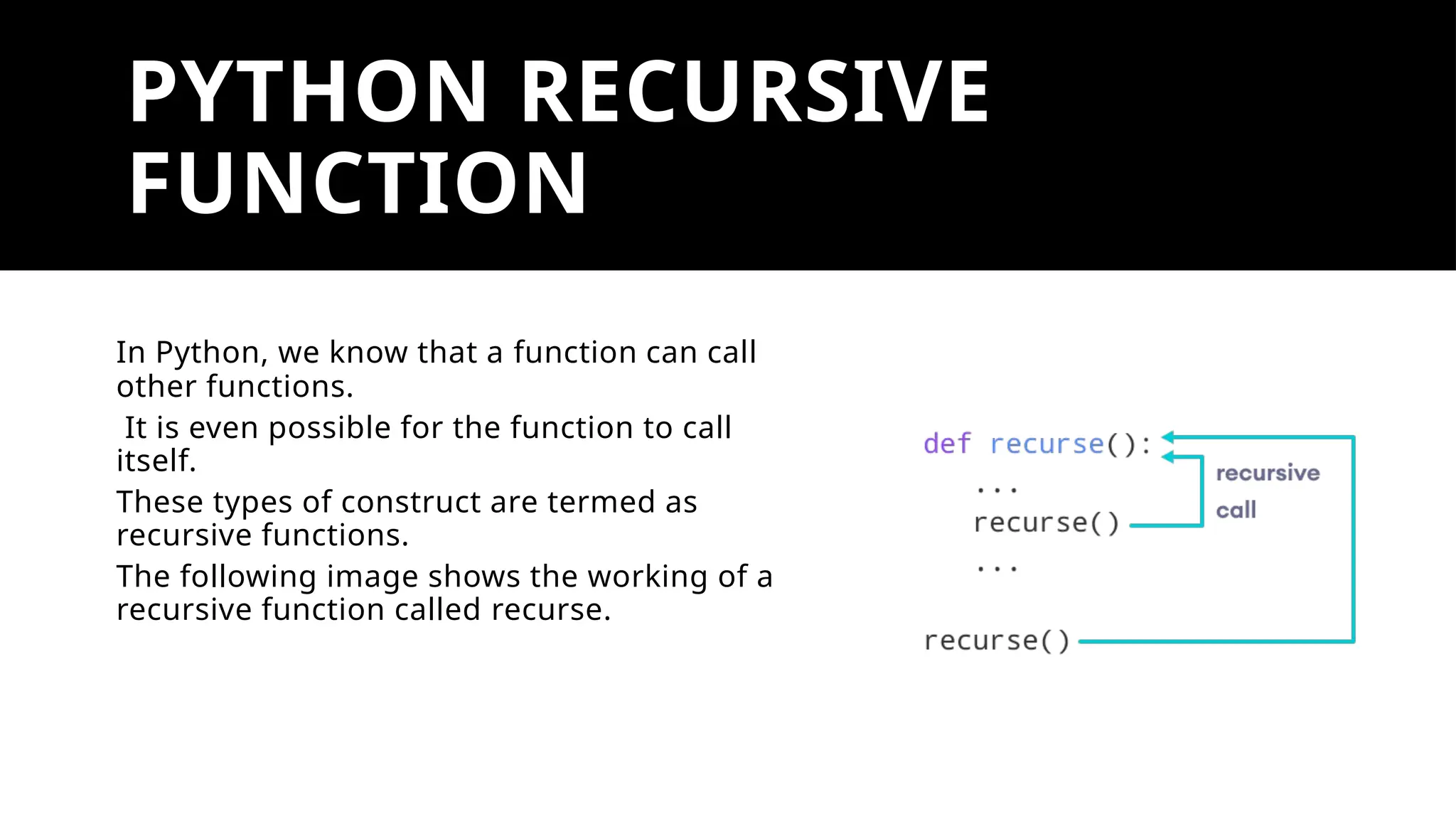
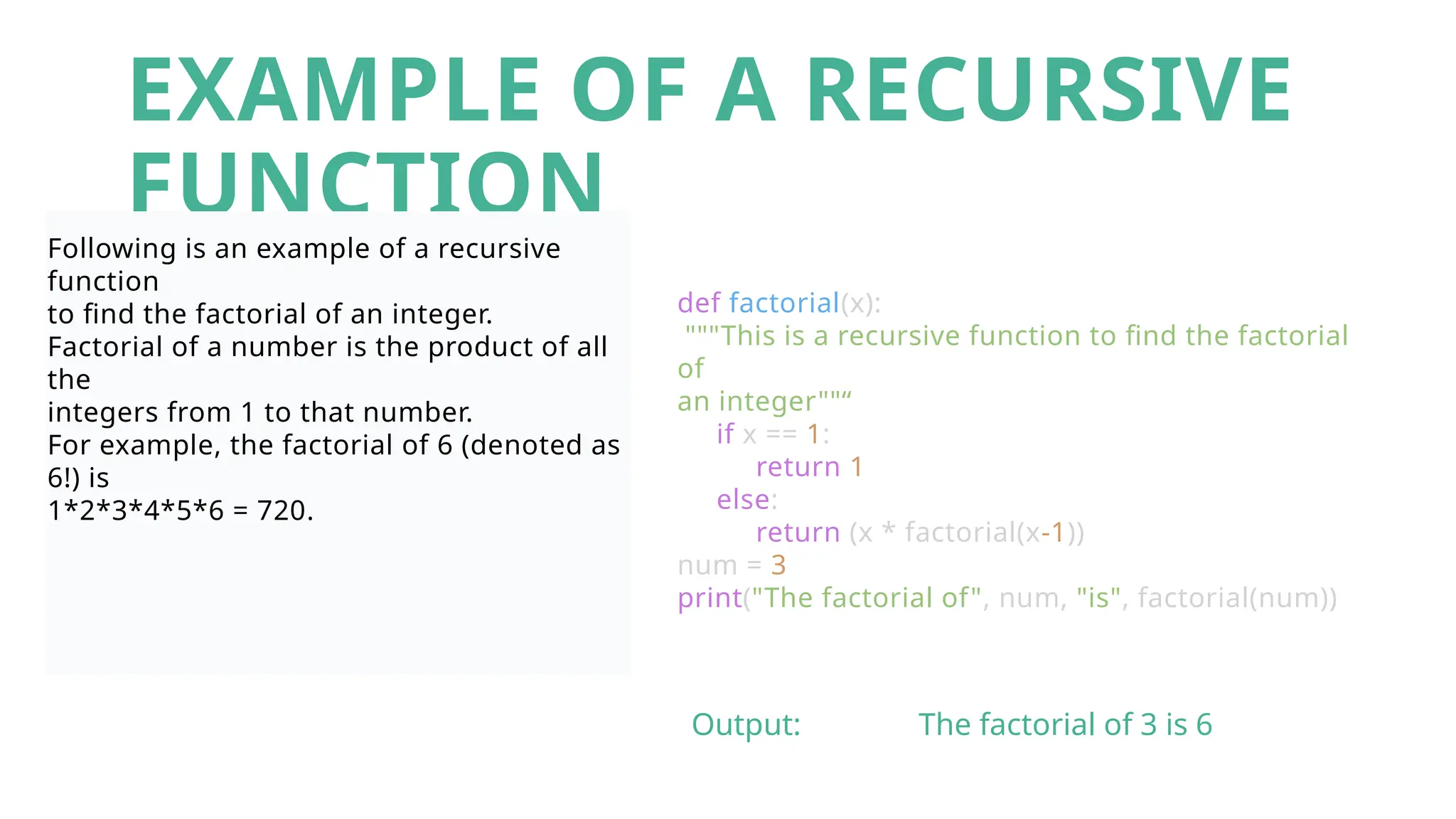


![• Our recursion ends when the number reduces to 1. This is called the base condition.
• Every recursive function must have a base condition that stops the recursion or else
the function calls itself infinitely.
• The Python interpreter limits the depths of recursion to help avoid infinite recursions,
resulting in stack overflows.
• By default, the maximum depth of recursion is 1000.
• If the limit is crossed, it results in RecursionError.
Let's look at one such condition.
def recursor():
recursor()
recursor()
Output
Traceback (most recent call last):
File "<string>", line 3, in <module>
File "<string>", line 2, in a
File "<string>", line 2, in a
File "<string>", line 2, in a
[Previous line repeated 996 more times]
RecursionError: maximum recursion depth exceeded](https://image.slidesharecdn.com/dsarecursion-240808052659-6fec2072/75/DSA-Data-structure-algorithm-dRecursion-pptx-7-2048.jpg)
